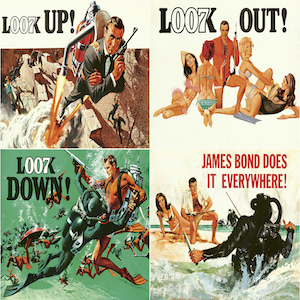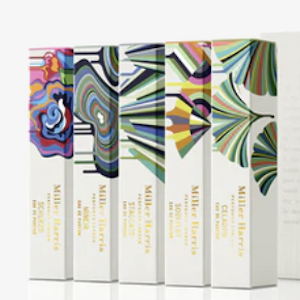Art History 2.0
By Catarina Wilk
What would the world be without the many faces of art? Without the brilliant masterpieces of remarkable artists such as Kandinsky, Picasso, Warhol and Hirst (just to name some of the world’s greatest artist of all time…)? Yes, you are right! Our world would be extremely bleak, dull and of course, less colourful!
Author Mark Getlein and writer Annabel Howard took this as an incentive and created the book „Art Visionaries“ to pay tribute to some of the world’s greatest artists in the wonderful world of art. Right at first glance, „Art Visionaries“ is more than just a beautiful book that you should add to your bookshelf at home!
„Featuring 75 of the world’s most influential artists, this compelling book presents the story of art from the beginning of the 20th century.“
On top of that, the book itself is packed with 340 astonishing illustrations along with a career timeline of each artist that show the artist’s individuality and unique way of creating art works.
For our greatest pleasure, .Cent was able to interview the author Mark Getlein in order to ask him a few questions to get an insight into the process of creating „Art Visionaries“.
Why did you pick the 75 visionaries that you did and would you consider them as artists that others have used for inspiration? If so, why do you think they have had such a lasting impact?
It was a slightly mad and almost impossible undertaking. We wanted to select 75 artists whose work was central to art as it unfolded across the 20th century, a parade of individuals through whose lives, words, and works the story of the century could be told. A central core, a surprisingly small core, came to mind immediately as being absolutely essential. A larger number seemed like obvious choices. But after that there were many difficult decisions to be made, as available slots grew fewer and the number of artists we admired did not. But we did it. Our 75 visionaries include the creators of the century’s most iconic works, the founders or key players of its many movements and trends, and exemplars of its evolving practices and shifting concerns. Certainly others have looked to them for inspiration, and not only other artists—poets, designers, writers, and cinematographers have been nourished by them as well. They are artists of great imaginative power, and they continue to have an impact because of the force and originality of their vision, the fertility of their ideas, and their single-mindedness in realizing their work. Each one of them is a world.
What is it specifically that these artists bring to the table that is unique?
What they bring that is unique is a question that requires seventy-five different answers! Take, for example, the artists that ushered in the century—Matisse, Picasso, Kandinsky, Boccioni, and others. They had all received traditional academic training, yet one after another they cast their hard-earned skills aside to pursue radically different paths, developing Fauvism, Cubism, Abstraction, and Futurism. The spell of the 19th century was broken. It must have taken great courage to step into the unknown like that. Other artists channeled the mood of their time into unforgettable images. It’s impossible to imagine the feverish brilliance of the Weimer Republic, for example, without the paintings of Beckman, Dix, and Grosz. Still others found subject matter where no one else was looking, as when Pop artists such as Warhol and Lichtenstein took art off its high horse and mixed it up with advertisements, comic books, and mass imagery. Most of them held strong views about art, often strongly opposed. Duchamp, for example, wanted art to engage with ideas, whereas Dubuffet insisted that art had nothing at all to do with ideas. It’s exhilarating, a little intimidating, and ultimately quite liberating to come into contact with such conflicting stances.
The book spans quite a cross-section of art history, over a long time period. What do new, contemporary artists bring to the table?
Yes, it certainly does! Contemporary artists inherit a world in which almost anything can be offered and interpreted as art, in which great amounts of money flow through a highly developed art market, and in which an international circuit of art fairs, biennial exhibitions and cavernous museums tends to favor art that offers spectacle, entertainment, or an immersive experience. The most representative contemporary artists move comfortably in this world, turning it to their advantage. Damien Hirst and Jeff Koons, for example, delight in spectacle. Olafur Eliasson creates immersive installations that are poetic and meditative, gently encouraging spectators to slow down and become aware of seeing and sensation.
The paperback version of „Art Visionaries“ will be out in January 2016. So make sure you get your copy as soon as possible because one thing is certain, art history will never get more interesting!









